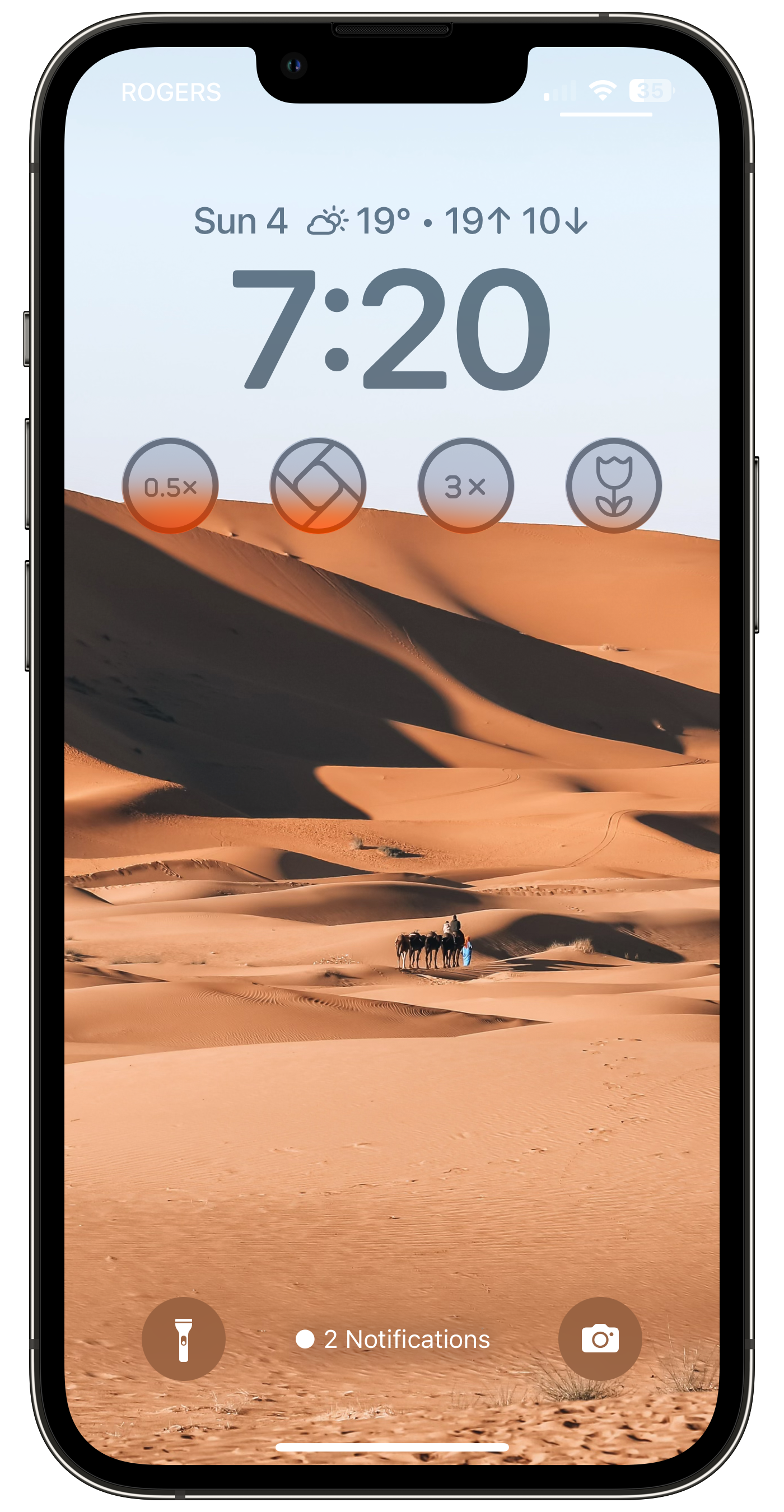-
In Photography, the iPhone Can Be a Killer
My nephew, a semi-pro photographer, recently sold 90% of his photography gear (Canon). He only kept one body and one 50mm lens. 😱 He upgraded his phone to the iPhone 14 Pro. 😏He couldn’t be happier, he told me. Even with the iPhone, he essentially kept his photo-processing workflow as-is (Adobe Lightroom). This makes me pause a bit. Sure, he spends much less time doing professional photography work, but still. I call this the iPhone-photography killer effect. Continue reading →
-
📺 I always keep two Apple TVs: an Apple TV HD for the main bedroom that I gave to my brother-in-law, and an A12-based Apple TV 4K was my main ATV for the living room. Today, I bought the 2022 Apple TV 4K with Ethernet. The older one is now in the bedroom, and the new one is in the living room. Not what I call exciting upgrades. Had to redo all the apps setup. 😒 But it does feel faster in a more compact package.
-
Funny thing: I don’t see many comments about iOS 17’s autocorrect. Is it really better or what?? Either nobody cares, not that many are using iOS 17 yet (it’s beta 1, after all), people are busy checking compatibility with their apps, or it’s the same sh**? 🤔
-
I’m Testing Day One for My Travel Journal Experiment
Date: June 9, 2023 at 5:25:24 PM EDT Weather: 18°C Mostly Cloudy Location: Montréal, QC, Canada I’ll be going to Morocco a week from now. I plan to use Day One to document my trip there. It will be the first time since I’m a Day One user. I don’t know how I could not think of this before. I’ve been a big fan of Day One forever. It’s such a rich journaling app for the Mac, the iPad and the iPhone. Continue reading →
-
Still working from the coffee shop. 😅 While reading a technical document, I wish I could take notes and keep bookmarks about my readings. I discovered that, as well-thoughtful my personal creative workflow can be, I’m under-equipped for my work life🤦🏻♂️. OneNotes from Microsoft is great but so dull at the same time. This leaves me with Notion and Craft Docs. 🙄🤔 I really have to up my game at work; I’m way too lousy. I should use lessons learned from my blogger life.
-
Suddenly, while I’m working on my iPad Pro in a coffee shop, I’m starting to wonder if having only my iPad Pro will be enough for my trip to Morocco. I need to travel « light », but… 🤔
-
As much as I’m invested in Craft Docs, I’m not sure I’ll use it for my travel notes this time around. It’s not very good when working offline. Maybe Apple Notes? Why not Day One? 🤔 The latter could be a fun experiment, and it’s easy to export journal entries into Markdown for reuse elsewhere!
-
There is one thing that I’m really looking forward to on our trip to Morocco🇲🇦. For the first time ever, we will have a private guide for the whole trip. I’m usually the main driver when going on such a vacation. Now, I’ll be quietly sitting in the van and be free to take pictures while on the move. 📷
-
I’m still slowly digesting Apple news of this week (think of a cow 🐄 in the field 🌿). About macOS Sonoma widgets 🖼️: it’s surprising that Apple is showing widgets to be perfectly aligned when they are dropped on the desktop background. According to some YouTuber’s early reviews, you can be messy with them and drop them wherever you want. People will get messy, for sure.

-
One week from now, it’s vacation time! I’m too busy at work, so this seems far away; I’m not in the vacation mood yet. This week-end, I really need to kick my butt and put myself in “get in the mood, get ready” mode! One way to achieve that, update my iPhone wallpaper. One step at a time.

-
RSS > Reddit. That is all. Think twice before telling me that I’m wrong. Spoiler alert: contribute to your own destiny instead of other corporations’ destiny.
-
Watch Out Reddit
🤨 Because of recent Reddit behaviors towards their API consumption models, seeing Apollo go, just like that, plus similarities of behavior with Twitter, I may drop my cross posting to Reddit as a first step of protests. Then, stop manual posting (in /r/craftdocs for example). Ultimately, closing my account could become a possibility. 🫤 Continue reading →
-
Use Ghost Bookmarker to easily add links and notes to a post, straight from your browser. Links are saved as a bookmark card (with an optional note) to a draft post called “Bookmarked links.” If this post doesn’t already exist, it’s created for you. Otherwise, bookmark cards are added to the existing content. If you publish the post or change the title, Ghost Bookmarker will create a new post with the “Bookmarked links” title. One way to use this is to save links during the week, publish your curated link list, and then repeat the process as needed. Source: Ghost Bookmarker - Chrome Web Store
What a great Idea for @Manton and Micro.blog! I want this! Please! 🙏🏻
-
I don’t know if it is because I’m getting older, but I have more and more trouble and aversion with high-velocity feeds coming from platforms like Mastodon (when following tags like #WWDC during the dub dub week). I prefer the slowness of Micro.blog’s feed or a simple articles reading session.
-
I’m still digesting everything we heard and saw today. Like someone wrote today: what was that? I already read good (and dumb) reactions here and there, from which I’m trying to stay away, just to focus and maybe get my analysis and perspective one of my own. That’s not easy; it’s so noisy out there right now. Stay tuned for later this week.

-
My blog theme was tweaked this morning to set a wider content area (from 40em to 60em). Since the content is resized according to the device screen, I don’t think it should create a problem.
-
A Few Last-Minute Questions for WWDC2023
It’s Apple keynote day, and it is exciting but also stressful! Here are last-minute questions. Will the headset pricing be announced today? Will the headset be like the Apple Watch and be running apps, or will it be more like CarPlay, with some additional viewport from the iPhone? Or a combination? Is the headset unveiled with a “one more thing” segment? When the iPad was announced, Steve Jobs spent some time explaining its relative position within the use cases spectrum of our computing devices. Continue reading →
-
👉🏻 This is WWDC day! Here are some informative tidbits. Two weeks ago, I set up a fake meeting in my work calendar for the entire afternoon (EST time here). I’ll be out of the office for the whole afternoon. I’ve been doing that for more than ten years. It worked 9 out of 10 times. I should be good to go today.
I’ll watch the keynote from within Safari to take screenshots (with the TV app, screenshots don’t work 🤔). Then, using a configured button on my StreamDeck mini, I’ll take the screenshots that will be saved and moved to my Synology NAS automatically; thanks to Hazel. The excellent Mastodon client, Ivory, will be running too side-by-side so that I can see reactions coming in. Sadly, feed streaming is not yet a thing on Mastodon, apparently.
My expectations are relatively low for all the tech announcements but high for the keynote production value and quality.
-
In case people want to react and discuss Apple’s WWDC keynote tomorrow, there is still this Wavelength invite available. Currently, 43 users are in the group.
-
😱I just realized that for the first time in quite a while, I’ll be following WWDC news outside of Twitter. I’m unsure if I’ll go on Mastodon or Bluesky to read the room temperature. I’ll see. Maybe I’ll just make up my own mind, too, which is a good thing. 🤔💭